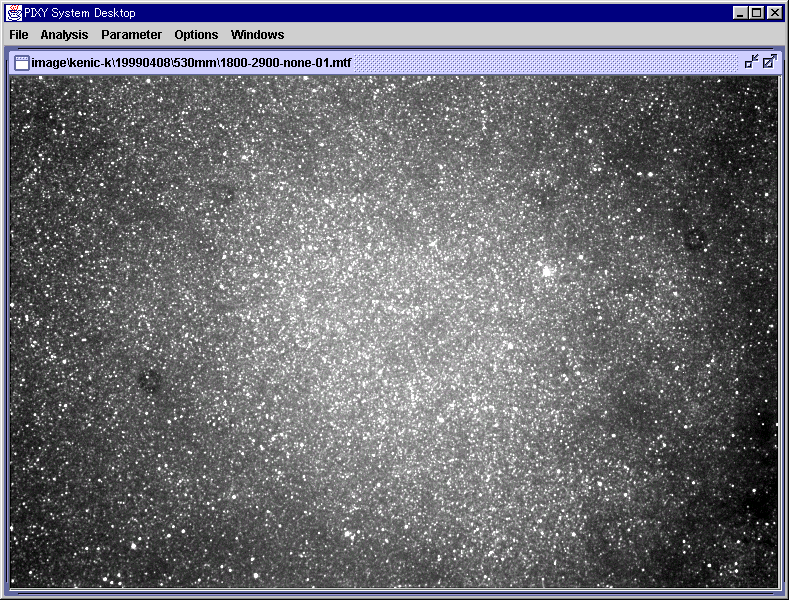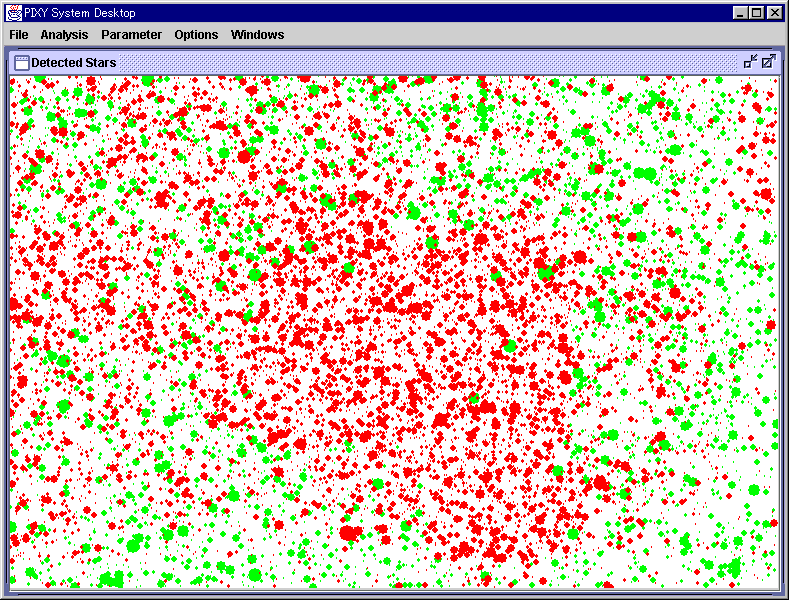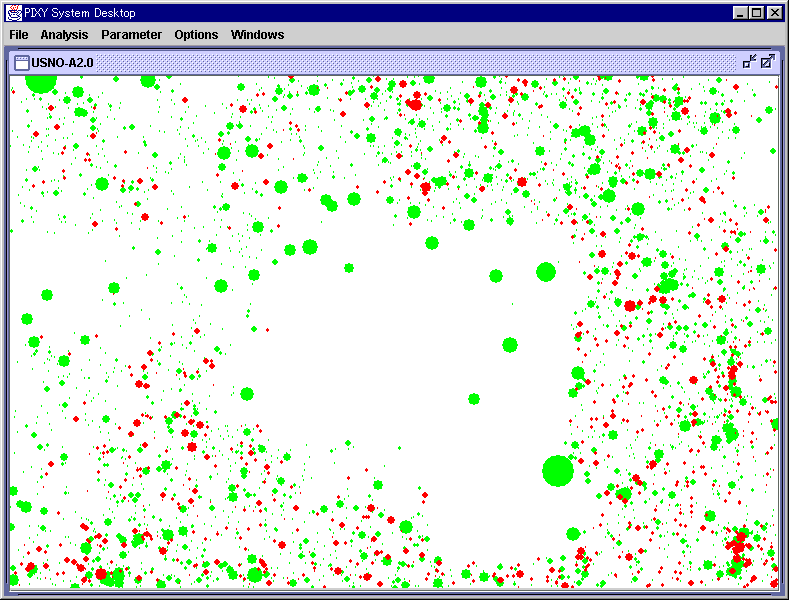Japanese version Home Page Updated on September 30, 2002
USNO-A2.0 data around R.A. 18 hour, Decl. -29 degThe pattern of stars between an image and a star chart becomes very different in the midst of the Milky Way in Sagittarius. Here introduces the example of an image at R.A. 18 hour, Decl. -29 deg. Most of the stars in this region are missing in the USNO-A2.0. Here is the unfiltered CCD image of this region taken by KenIchi Kadota. 
Examining this image using the PIXY System 2, it shows a chart of detected stars, and another chart of the same area plotting the USNO-A2.0 data. Here is the result. A green star is a normal one, detected from the image, and also recorded in the USNO-A2.0. A red star on the "Detected Stars" chart is one detected from the image, but not recorded in the USNO-A2.0. A red star on the "USNO-A2.0" chart is one recorded in the USNO-A2.0, but not detected from the image. On the "USNO-A2.0" chart, only a few stars are found, as if a large dark nebula covered this area. However, the real image shows that many stars are distributed all over the image. That is, most of the stars in this region are missing in the USNO-A2.0. Therefore, most of the stars are plotted in red color on the "Detected Stars" chart. The number of stars in this region is as follows.
The astrometric error of the examination using the PIXY System 2 is 1.5 arcsec. 

NOTE: The stars on the USNO-A2.0 chart are plotted based on the magnitude converted by the Taichi Kato's formula: V = R + 0.375 * (B - R) |
